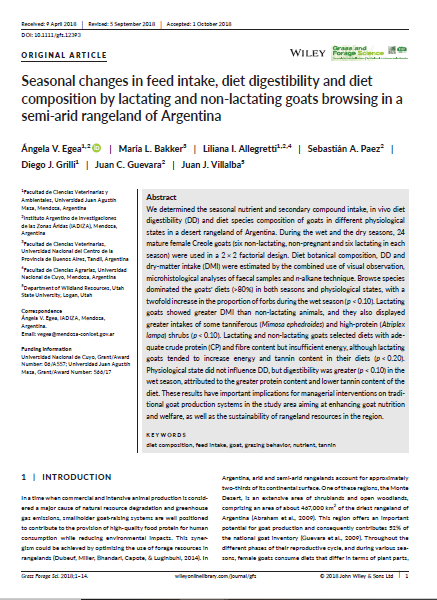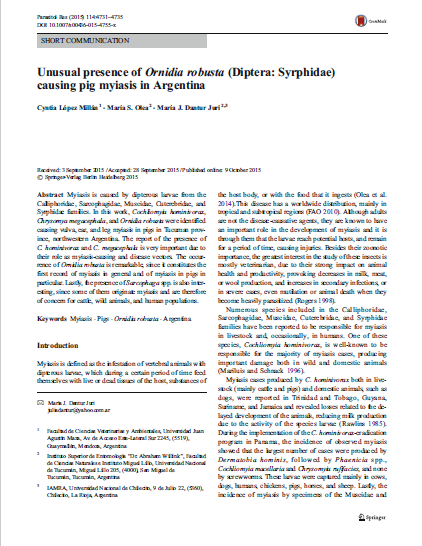Browsing Ciencias veterinarias by Title
Now showing items 24-25 of 25
-
Seasonal changes in feed intake, diet digestibility and diet composition by lactating and non-lactating goats browsing in a semi-arid rangeland of Argentina
(Comité editor Grass and Forage Science, 2018-10-01)We determined the seasonal nutrient and secondary compound intake, in vivo diet digestibility (DD) and diet species composition of goats in different physiological states in a desert rangeland of Argentina. During the wet and the dry seasons, 24 mature female Creole goats (six non-lactating, non-pregnant and six lactating in each season) were used in a 2 × 2 factorial design. Diet botanical composition, DD and dry-matter intake (DMI) were estimated by the combined use of visual observation, microhistological analyses of faecal samples and n-alkane technique. Browse species dominated the goats’ ... -
Unusual presence of Ornidia robusta (Diptera: Syrphidae) causing pig myiasis in Argentina.
(Comité editorial Parasitology Research, 2015-10-09)Myiasis is caused by dipterous larvae from the Calliphoridae, Sarcophagidae, Muscidae, Cuterebridae, and Syrphidae families. In this work, Cochliomyia hominivorax, Chrysomya megacephala, and Ornidia robusta were identified causing vulva, ear, and leg myiasis in pigs in Tucuman province, northwestern Argentina. The report of the presence of C. hominivorax and C. megacephala is very important due to their role as myiasis-causing and disease vectors. The occurrence of Ornidia robusta is remarkable, since it constitutes the first record of myiasis in general and of myiasis in pigs in particular. ...











